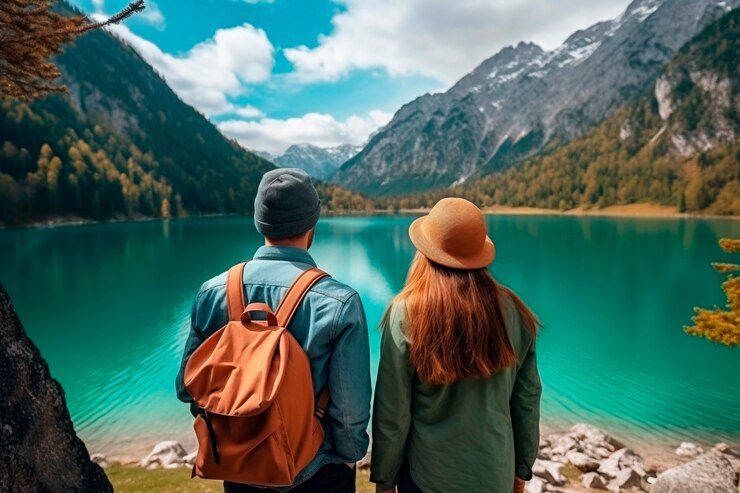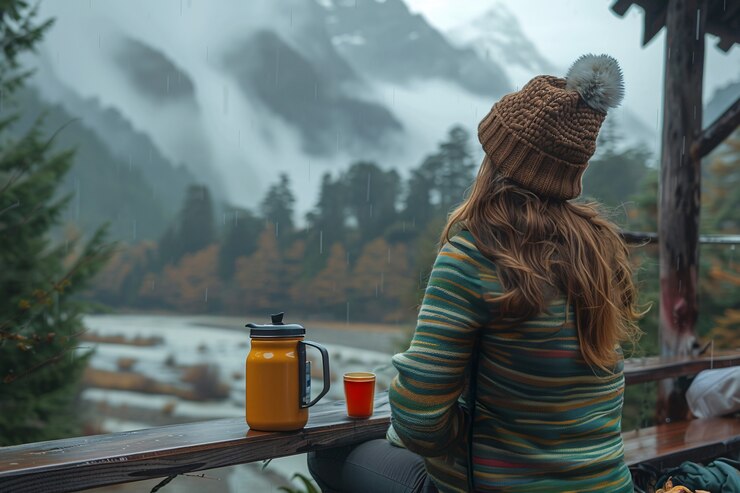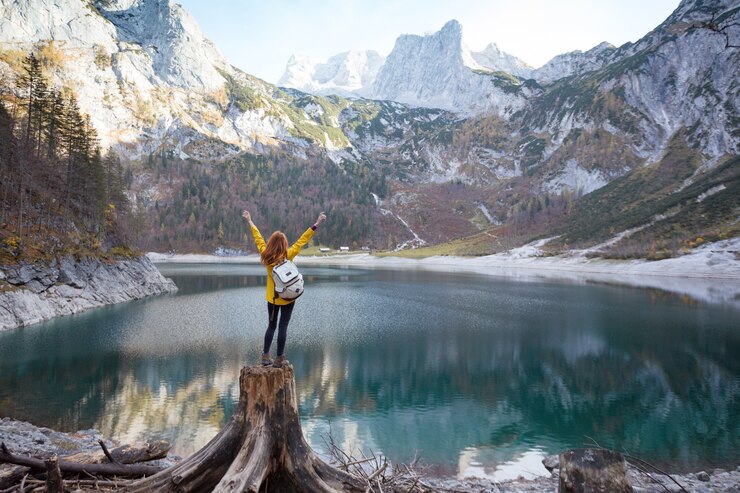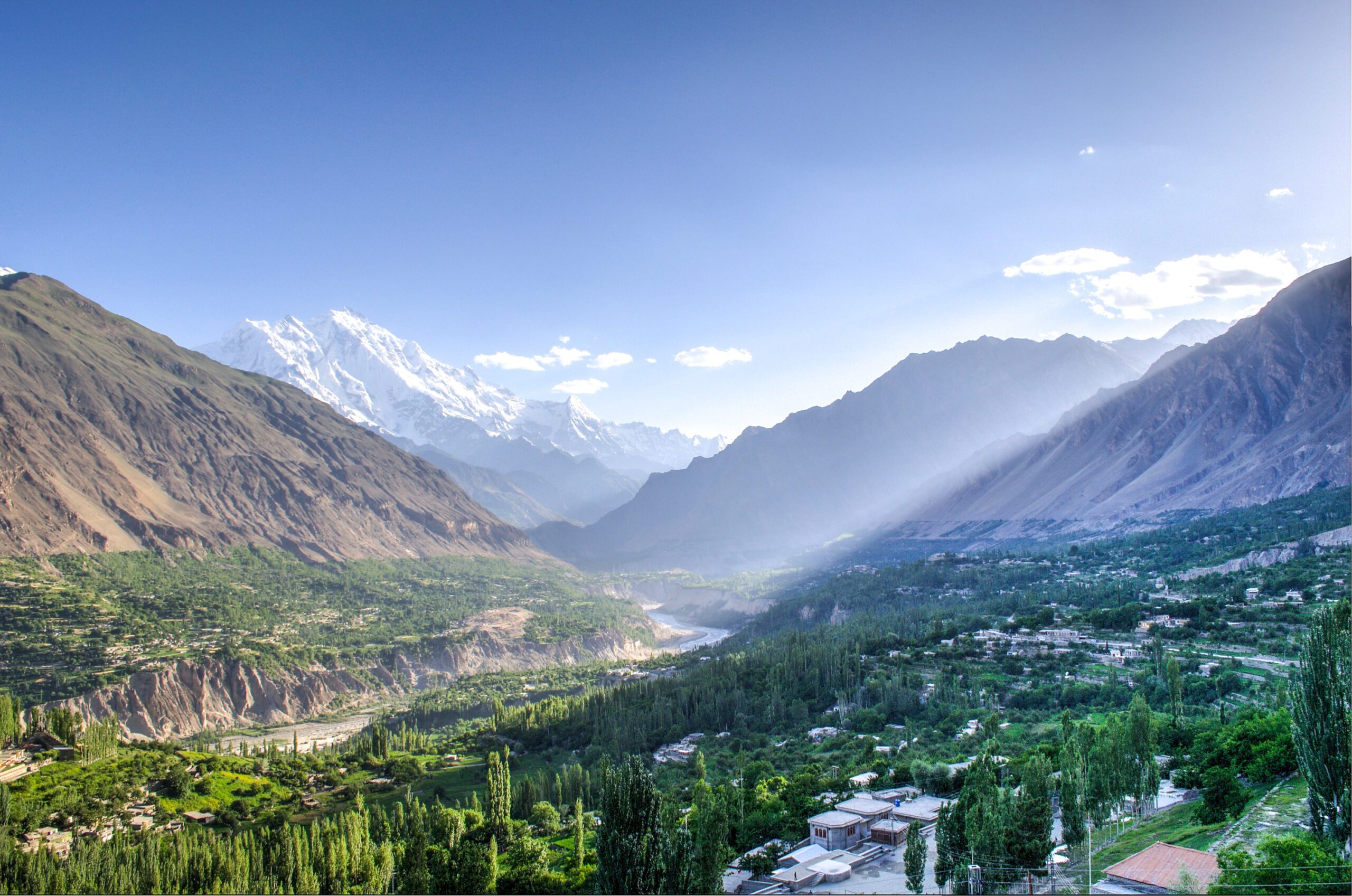
Table of Contents
Planning Your Dream Nature Lover’s Vacation in 2025
Nature Lovers want to dream of the adventure that takes you out of the hustle of daily life to the heart of nature? Planning the perfect trip for a nature lover can seem like a huge task, but if approached in the right manner, it is achievable and very rewarding. In 2025, many places will be ready to present their beauties of natural wonders, wildlife encounters, and calm landscapes for unraveling. Let’s dive deep into a step-by-step guide on how to prepare the ultimate nature-centric vacation.

1. Pick Your Ideal Destination
While planning the ideal nature trekking trip, picking a destination will be of prime importance. Think of the kind of landscapes, wildlife, and activities that will interest you. For 2025, here are some of the top nature destinations to look into:
a. Mountain Getaways
Himalayas, Nepal
Facilities: Trek to Everest Base Camp, Annapurna region exploration, and viewing some of the world’s most breath-taking mountain views.
Best Time to Visit: The best months to visit are during the months of October to November and March to April. At this time, the climate is cool and stable and, with clear skies, one can really trek properly.
The Himalayas in Nepal are pretty breathtakingly stunning. Just imagine trekking through hiking trails zipping through ancient villages, vast forests, and along cliffs of some of the tallest peaks in the world. Just as appealing is the welcoming Nepalese culture along the way.
The Alps, Europe
Highlights: Go hiking along amazing valleys, ski along high-quality resorts, and experience charming alpine towns across Switzerland, Austria, and France.
When to visit: June till September for the hike. For skiing, December and February.
There really is no place quite like the European Alps. In the summer, hike or cycle through the valleys, which are then full of flowers. Skiers will love the winter options, and in between are quiet villages where you can get away from it all with a hot meal and gorgeous landscapes.
Rocky Mountains, USA
Top: Camp under starry skies, hike to alpine lakes, or white-water raft through Colorado, Wyoming, and Montana.
Best Time to Visit: Late spring to early fall (May to September) for warmer weather and accessible trails.
From scenic mountain roads to remote campsites nestled in the wilderness, the Rockies provide endless outdoor activities. Hike up to crystal-clear alpine lakes, go kayaking, or simply enjoy a night under the stars—this area is full of rugged beauty for adventurous souls.

b. Coastal Paradises
Galapagos Islands, Ecuador
Highlights: This tour takes one through encounters with marine iguanas and blue-footed boobies, snorkelling with sea turtles, and volcanic landscapes.
Best time to visit: December through May for warm waters and lush landscapes; June to November for cooler temperatures and active marine life.
The Galapagos Islands provide an unparalleled coastal experience with face-to-face contact with animals that exist nowhere else in the world. Each island offers a different combination of animals and landscapes. Explore volcanic craters, rest on pristine beaches, or snorkel alongside penguins, sea lions, and sharks.
Great Barrier Reef, Australia
Highlights: Dive among vibrant coral reefs, see colorful fish species, and experience a marine wonderland.
Best Time to Visit: June to October for perfect diving weather and lower humidity.
The Great Barrier Reef is an ocean enthusiast’s dream. This is one of the most extensive coral reef systems globally, which means it’s an absolute paradise for snorkelling and diving. Just imagine swimming through crystal clear waters with a turtle by your side, a few manta rays, and spectacular coral formations.
Maldives
Highlights: Relax on sandy beaches, swim in turquoise waters, and indulge in water sports.
Best Time to Visit: From November to April since the dry season has fine weather with ideal conditions for beach activities.
Known for its luxury resorts and postcard-perfect beaches, the Maldives is an excellent destination for nature lovers. The islands present a serene getaway with water sports, underwater adventures, and simply lounging on the beach, all against the backdrop of crystal-clear waters and coral reefs.

c. Wildlife Sanctuaries
Serengeti National Park, Tanzania
Features: See the Great Migration of wildebeest and zebras, view the Big Five, and take in classic African landscapes.
Best Time to Visit: June to October for the Great Migration, or January to February for the birthing season.
Serengeti National Park is one of the world’s most remarkable wildlife experiences. It ranges from the annual wildebeest and zebras migration to the rare opportunity of seeing lions, leopards, and elephants. It is absolutely a must for animal lovers.
Amazon Rainforest, South America
Features: Jungle expeditions, exotic wildlife encounters, and insights into indigenous cultures.
Best Time to Visit: May to September for fewer mosquitoes and better accessibility.
The Amazon is an ecological marvel. Imagine floating down the Amazon River, listening to the calls of exotic birds and monkeys. This is a once-in-a-lifetime experience where you can discover dense jungle trails, learn about native flora and fauna, and engage with local communities.
Masai Mara National Reserve, Kenya
Highlights: Witness Africa’s iconic wildlife, such as lions, elephants, and leopards, in their natural habitats.
Best Time to Visit: June to October during the dry season, especially in July and August for the Great Migration.
The Masai Mara is famous worldwide for wildlife viewing, in which one gets to view the iconic African savannah and a host of roaming animals. It is also an opportunity to meet local Masai people and their unique traditions and lifestyles.

2. Set a Budget
Having a solid budget will keep you financially prepared for a fun outing in nature, and a well-planned budget keeps cost surprises at bay. Check out the list below for key considerations:
- Rooms: Camping might be too cheap, followed by options like budget hostels then mid-range hotels and luxuries.
- Transportation: You’ll either fly or go there by road; flight arrangements can be really pricey, especially if you go abroad, so look for bargains at the same time and see if you could go along with buses or trains and other cost-cutting tools.
- Activities: Your package may include the expense of some guided tours, equipment rental fees, and even entry fees at some parks or other reserves.
- Food: If you intend to camp or trek across isolated areas, then buying and preparing your food in advance can save you from costs. Or if you prefer to try out food that is locally prepared, you can allocate a budget for dining at local places and enjoy the delicacies of the region.

3. Research and Plan Your Itinerary
A well-planned itinerary will make your trip smoother and more enjoyable. Here’s how to plan effectively:
- Visa Requirements: Check visa requirements for each country on your list and apply well in advance.
- Best Time to Visit: Determine the best season based on your preferred activities and the weather. Avoid peak seasons if you prefer quieter destinations.
- Packing List: Pack according to the climate and activities at your destination. Sturdy backpacks, comfortable footwear, or layered clothing are most needed for nature trips.
- Essential Documents: Bring copies of passports, visas, travel insurance, and any required health certificates. Digital backups for all these documents also should be carried in case some important documents get lost.

4. Book Your Trip
It’s time to fill in the important details of your trip. Here’s what you need to do at every step:
- Flights: You could use travel comparison websites or put up fare alerts so you can get the best price for flights.
- Accommodation: Choose between camping under the stars and staying in a cosy cabin. Just book early before peak season so you will not be left scrambling over last-minute hassles.
- Activities and Tours: If you have your heart set on particular activities, such as a guided wildlife safari or a scuba diving escapade, then advance booking will help you save some precious time and secure your spot.

5. Pack Smart
Packing for nature lovers can be somewhat of a balancing act. You must balance between packing all the things you need while at the same time keeping it light. Here are a few tips to pack smart:
- Lightweight Clothing: Pack versatile, moisture-wicking clothing that can be layered for various temperatures.
- Basic Equipment: While venturing outdoors, some basic requirements include a solid backpack, good hiking boots, a refillable water bottle, and high SPF sunscreen.
- First-Aid Kit: Pack a basic kit of bandages, antiseptics, pain relievers, and any other personal medications.

6. Enjoy the Experience
Now that you have planned, go out and enjoy your adventure with an open mind and heart.
- Flexibility: The best nature trips are the ones you are flexible about. You might get unpredictable weather or a sudden open route before you—be prepared to enjoy every minute.
- Respect Nature: Clean up after yourself, follow marked trails, and refrain from disrupting the wildlife around you in keeping with the principles of Leave No Trace.
- Connect with Locals: Engage with local communities to improve your experience and gain distinct insights into the culture of this region.
- Capture Memories: Do not forget to take pictures or videos to remember your tour. Just be sure that you put the camera aside some time to enjoy the scene without a screen.

7. Brush Up on Sustainable Travel Practices
Whenever one goes to a natural place, especially an easily fragile ecosystem, one should always come in with a sustainability mindset. This is how you can minimize your impact on such ecosystems:
- Leave No Trace: Learn the “Leave No Trace” principles. It is a set of guidelines that is intended to minimize human impact on nature. These include taking out all trash, respect for wildlife, keeping on marked trails, and no destruction of plants or rock formations.
- Support Local Conservation: Try to find organizations that might be involved in conserving the environment in that place, working to conserve specific endangered species or protecting endemic plant species. Quite a lot of your entry fee to visit the parks and your fees for any guided tours usually goes toward supporting conservation activities, but you can go a bit extra by giving some small amounts of donations to the local conservation efforts through the local parks and nature reserves.
- Eco-Friendly Gear: Select products that use sustainable materials when buying gear for the trip. Try to wear eco-friendly clothes and bring reusable utensils instead of disposable plastics. Invest in solar-powered gadgets like solar chargers or flashlights. Make a great difference by going for brands that will use recycled or responsibly sourced materials.
- Travel Light and Mindfully: This means that not only will you be lighter in weight, but you also make your trip less polluting. Take only the necessary stuff with you, and then you try to take the minimum amount of packaging along. Taking reusable containers, bags, and toiletries along the way can significantly minimize waste when traveling.

8. Be Prepared for the Unexpected
Nature trips always have their surprise, ranging from changes in weather to sudden animal sightings. With preparation, one can turn the surprise into a memorable experience:
- Check Weather and Terrain Conditions: Check the latest weather conditions every day before you set out. Nature destinations experience unpredictable climates, and one storm, cold front, or heat wave can throw off your plans. For longer treks or hikes, even the terrain conditions, which might be mud, ice, or dense vegetation, will help you avoid several challenges on the way.
- Be Aware of Wildlife: Many natural sites are home to various types of animals, and while seeing wildlife can be exciting, it is important to know how to act around them. Keep a safe distance, and do not feed or approach animals. If you are in a bear country or an area with big predators, learn safety precautions such as making noise while hiking or storing food properly so as not to attract animals.
- Emergency Kit: Pack a light emergency kit suitable to your adventure. This might consist of a whistle, a flashlight with spare batteries, a portable power bank, some minimal stocks of high-energy food, and water purification tablets. If you plan on venturing into very remote areas, a GPS device or satellite communicator will save your life.

9. Strike a Balance Between Planning and Spontaneity
While having a planned itinerary is a smart idea, particularly regarding must-see spots and timed activities, still has room for spontaneity.
- Slow Down and Appreciate the Place: Forget racing to the next big scenic view. Sometimes take time to breathe it in. Nature trips are really about the connection one needs with the landscape, sounds, and even smells, at a given place. And slow is where those little hidden trails, the unusual plants, and just an idea of being in the quiet start.
- Socialize with Locals or Other Travelers: Time for relaxed travel also comes in handy when you sit down to talk to some locals or fellow travelers to know if they have seen any secret places or undesignated trails. More often than not, your impromptu conversations lead you to places you never knew would be there had you opened a guidebook.
- Make some room for unique experiences: Mother Nature is unpredictable. You might get lucky and have the opportunity to see deer herds at sunrise, or flowers that bloom just once a year. In case you schedule too much time and leave little time without a plan, most probably you will miss all that. Plan some free time every day so that you can take advantage of whatever comes your way.

10. Make memories beyond photos
The moment can be recreated by photographing or recording videos; however, don’t let the camera get between you and the beauty surrounding you. Here are a few ideas for more immersive memory-making:
- Nature Journal: Carry a pocket-sized notebook or sketchbook. Writing your thoughts, sketching the landscape, or describing what you see can make memories vivid and personal. You can record wildlife sightings, interesting plants, or even the colors of the sky changing. This sort of journaling is an excellent way to wind down every day.
- Use all your senses: To really experience the places you visit, immerse yourself in every experience, paying attention to all of your senses. Turn off your eyes and listen for birds singing or leaves rustling in the breeze. Smell the fresh air, feel the texture of rocks and plants (where safe) and become immersed in each second that passes. These sensory memories linger longer than pictures of it all.
- Mindfulness: This can be through yoga, meditation, or simply sitting quietly and breathing. Deep mindfulness practices can really connect with nature. Being fully present in the moment allows you to appreciate details and lets you carry some calm of the wild with you back into daily life.

11. Plan for an Easy Return Home
While the end of a nature trip often seems bittersweet, some steps can make this transition to your daily routine easier:
- Reflection Time: Use your last couple of days to reflect on the experience. What did you like best? What have you learned about yourself or nature? A reflective wrap-up will help you carry the essence of the trip with you even after it’s over.
- Prepare for Any Climate Adjustment: If you are coming from a tropical climate to a colder region or vice versa, prepare the body for the physical change. A warm jacket for your return flight or a humidifier at home can ease the transition.
- Look After Your Gear: Cleaning, proper storage on returning will make sense especially for gears that you do not intend to use later for the ill-adventure trip. One example could be the cleaning of hiking clothes, airing tents, or putting oils in the case of hiking boots that help the equipment survive the journey for a bit longer.
- Share Stories and Inspire Others: Once you are back, share your experiences with friends and family, or consider joining nature forums or groups where you can swap stories with fellow travelers. Sharing your adventure not only keeps the memories fresh but might inspire others to take their own nature-focused trips.
Conclusion
Planning the perfect nature lover’s trip in 2025 requires careful preparation and a passion for adventure. From making a destination that suits your interests to creating a budget and selecting the right things to pack, some planning can make a rewarding and memorable trip. Whether you’re looking for mountains, ocean peace, or observing wildlife, this year presents all possibilities of nature discovery. Where will your next adventure be?
Frequently Asked Questions
- What are some eco-friendly travel tips when planning a nature trip?
- Bring a refillable water bottle and don’t use plastics; prefer eco-friendly accommodation and tour operators.
- How do I ensure safety when on a nature trip?
- Conduct research on the local weather conditions, carry a first aid kit, be cautious with local safety tips, and inform someone about your plans.
- What’s the best way to capture those wildlife photos?
- A good zoom lens avoids scaring animals, keeps safe distance, and is silent and patient.
- How can I avoid crowds in nature spots?
- Travel during the off-season, lesser-known areas, or early morning to popular spots. This will help you avoid crowded nature spots by exploring unknown trails and staying in far-off campsites.
- What apps are useful for nature trips?
- All Trails apps to search for trail maps, Peak Finder to find mountain peaks, and I Naturalist to identify plants and animals might be useful. You can save yourself when deep into the woods with no cell service by having offline maps or GPS apps.
- Do I need special insurance for adventure travel?
- Many standard travel insurance packages don’t include rock climbing, scuba diving and other adventure activities. Inquiry with your provider about purchasing an adventure-specific insurance coverage of outdoor activities, medical emergency, and evacuation where applicable.
- Do I bring my pets?
- Everything depends on a destination and a pet. Many national parks allow dogs, though rules vary incredibly. Learn about pet-friendly trails, accommodations, and rules prior to bringing the pet.
- What if I get injured or lost on my trip?
- Prepare. Carry some sort of first aid, maps, and-or a GPS device depending on your level of isolation, of course. And as well make sure you let some family member or friend know a head’s up about a trail and what time they could expect you to back to base camp.
With a little planning, an adventurous spirit, and open heart to the wonders of nature, your nature-oriented trip can be everything that you dream it to be. From majestic mountains to calm beaches, the world has lots of landscapes waiting to be explored. May all adventures leave you refreshed, inspired, and longing for that next trip into the wild. Happy travels!
Happy travels, and may your journey be as unforgettable as the landscapes you’ll explore!




